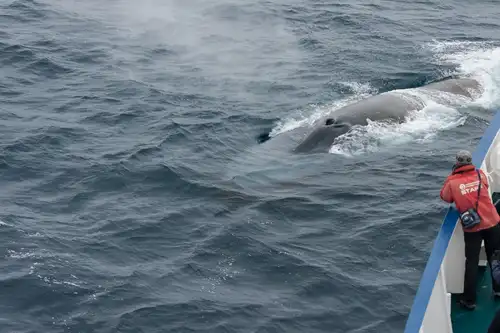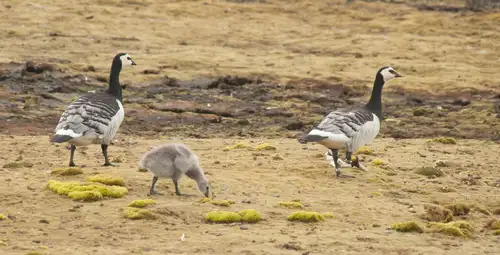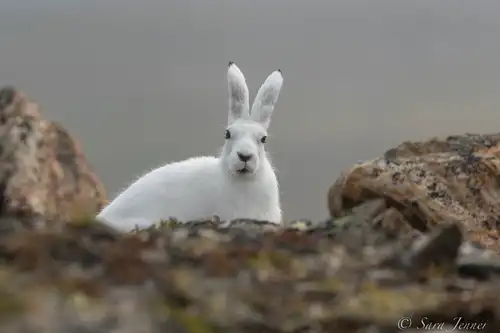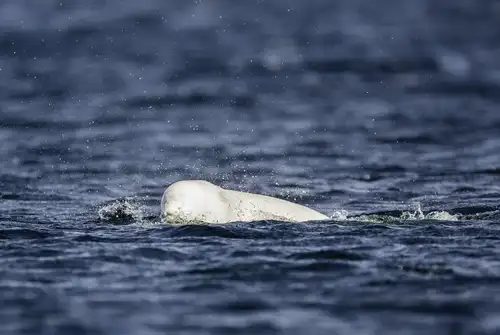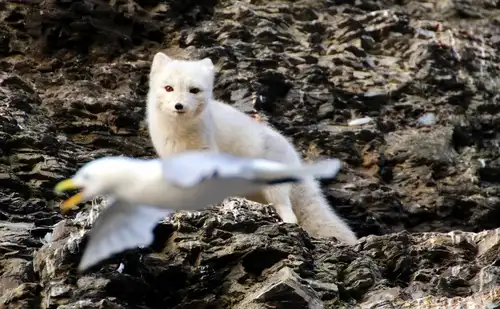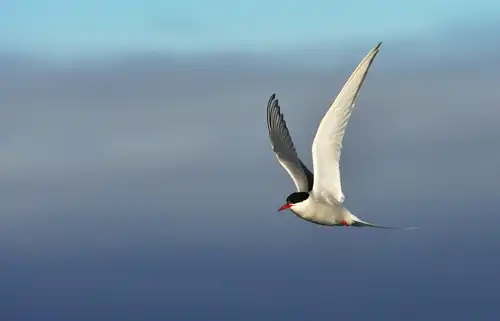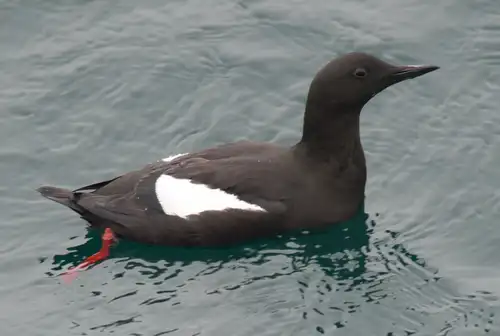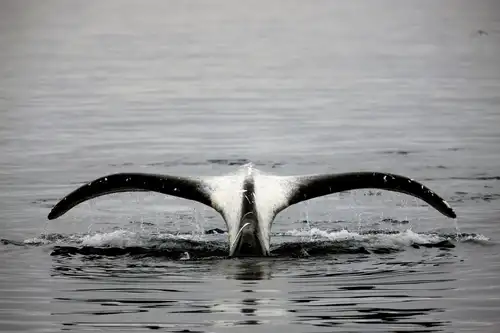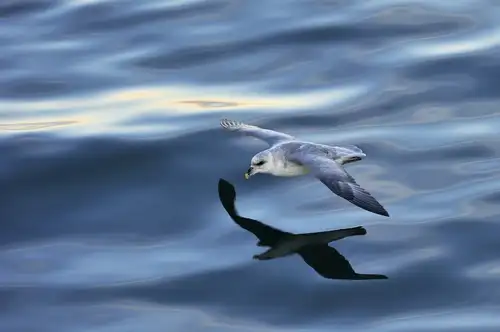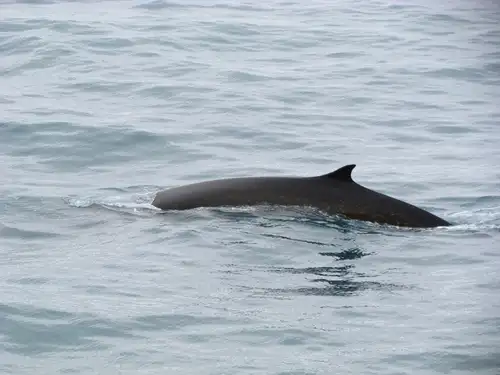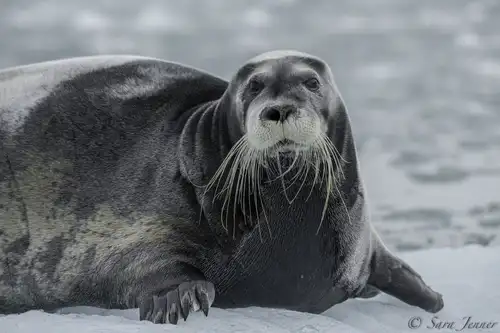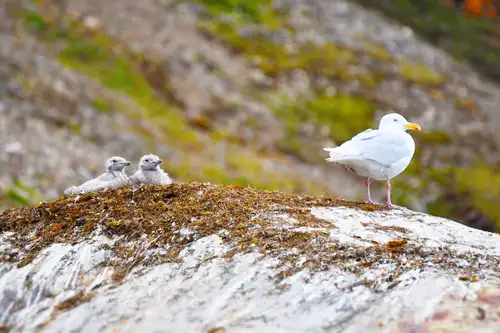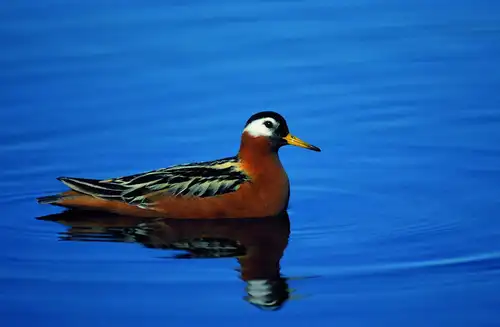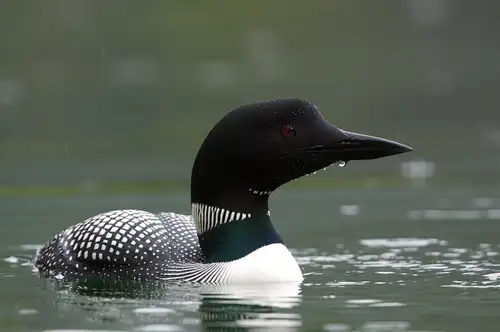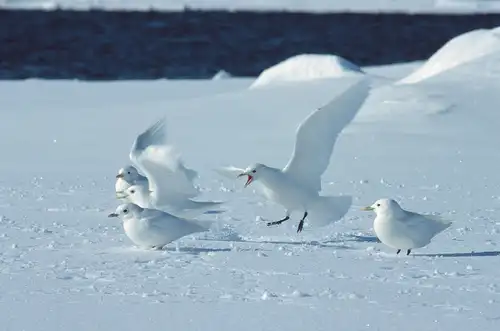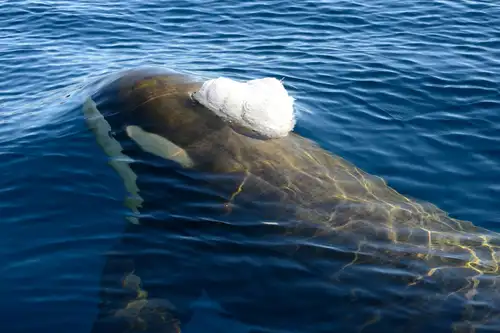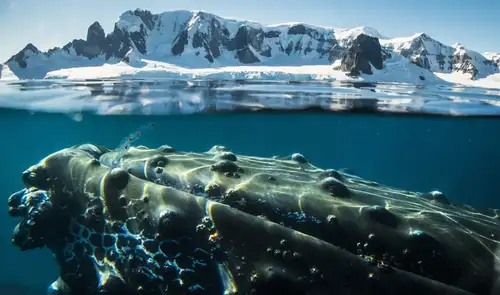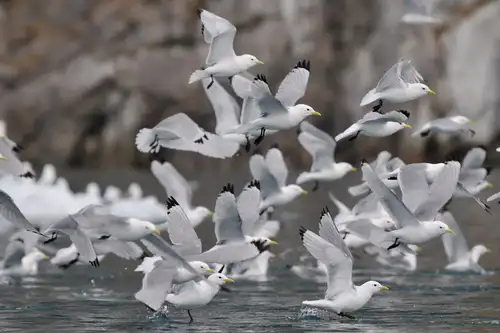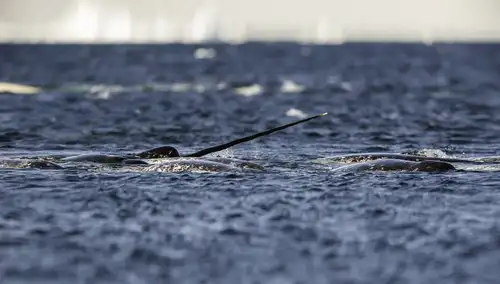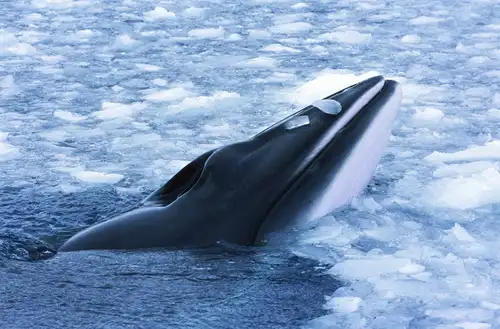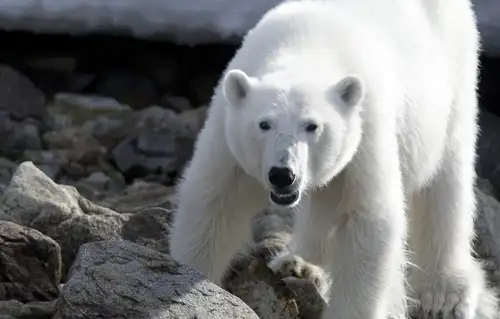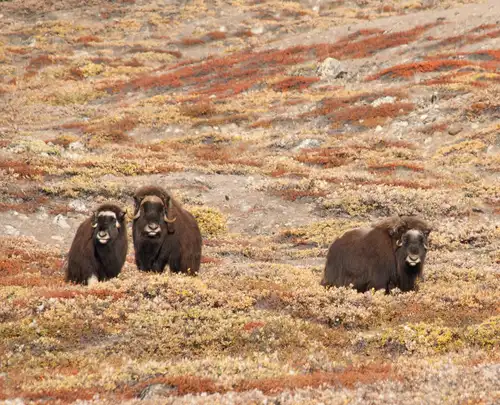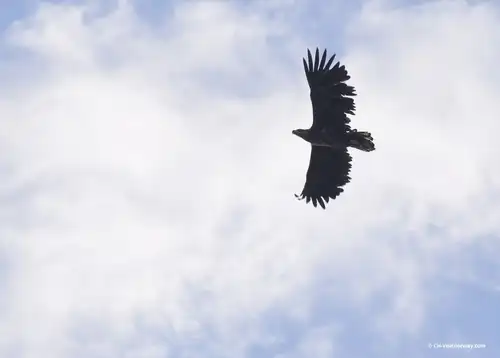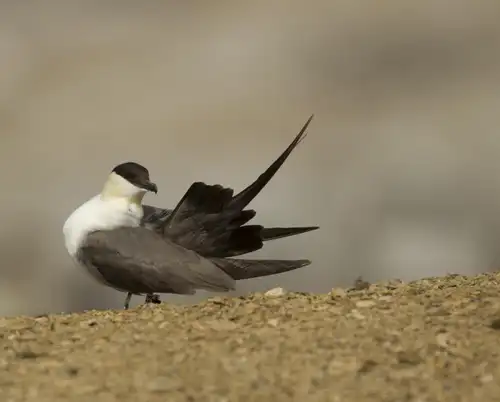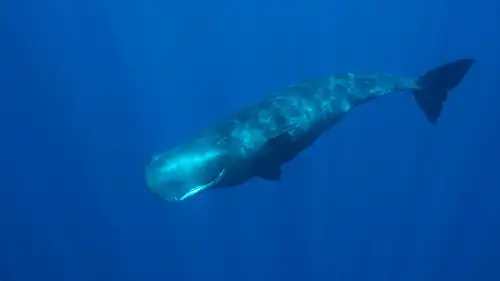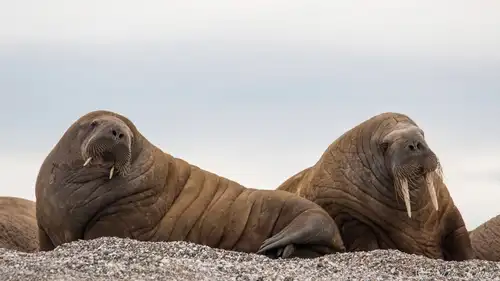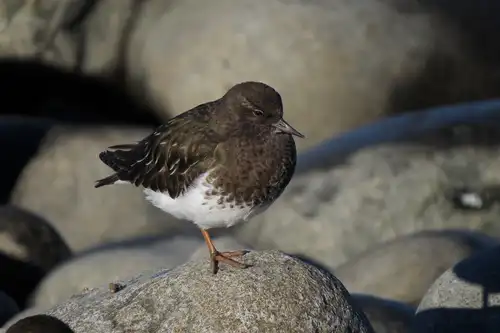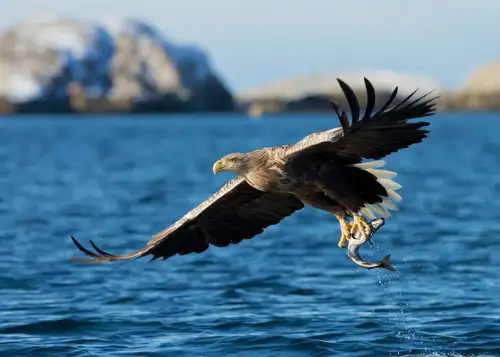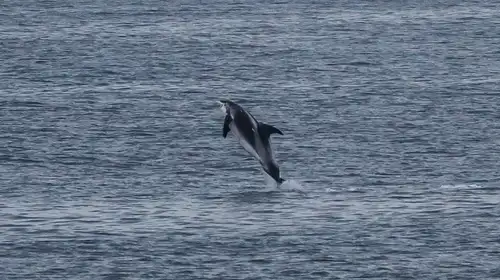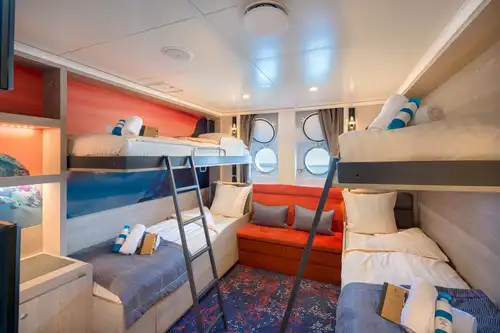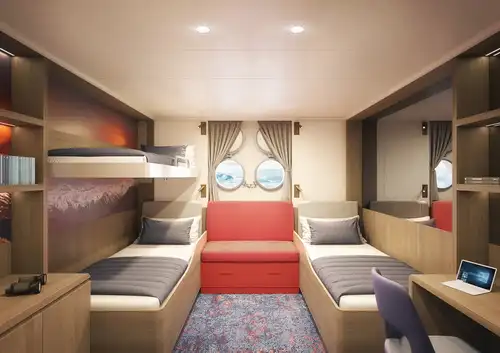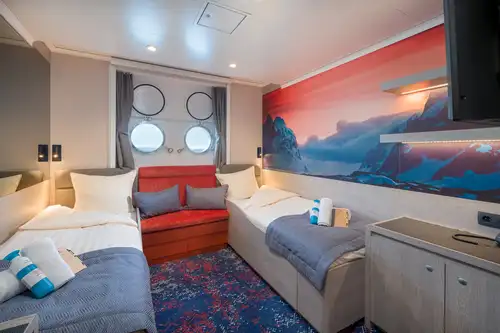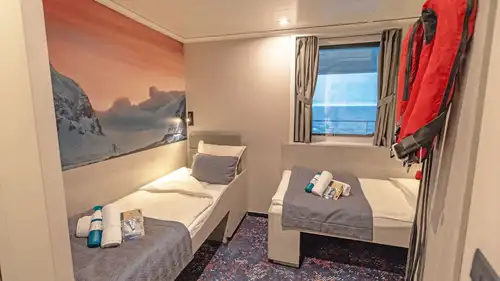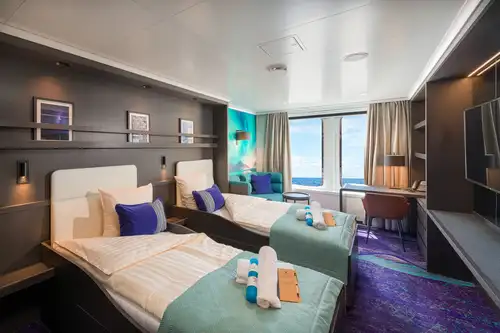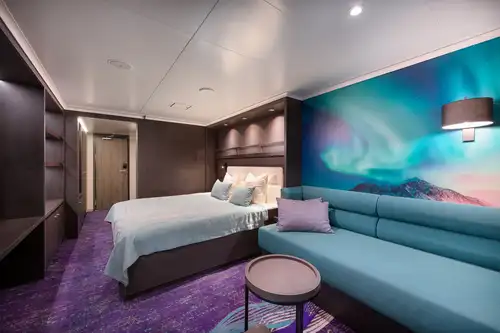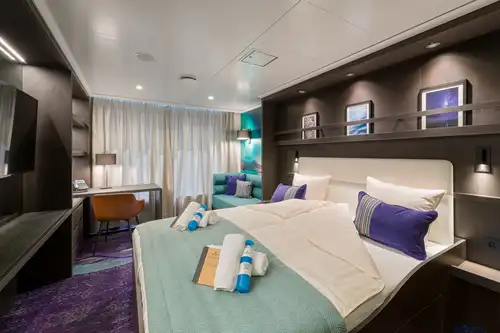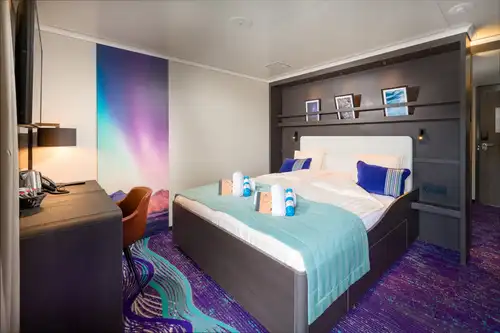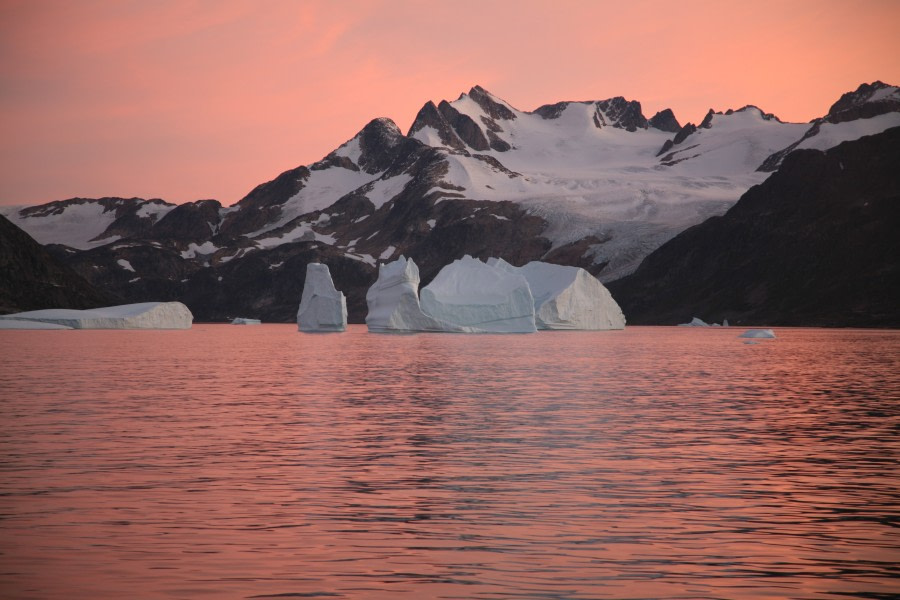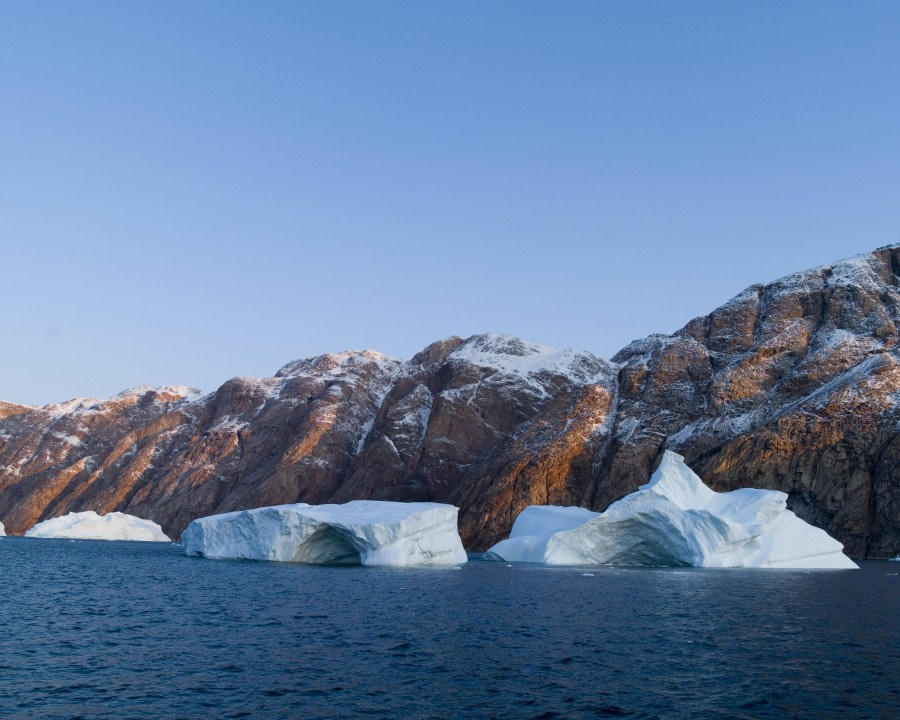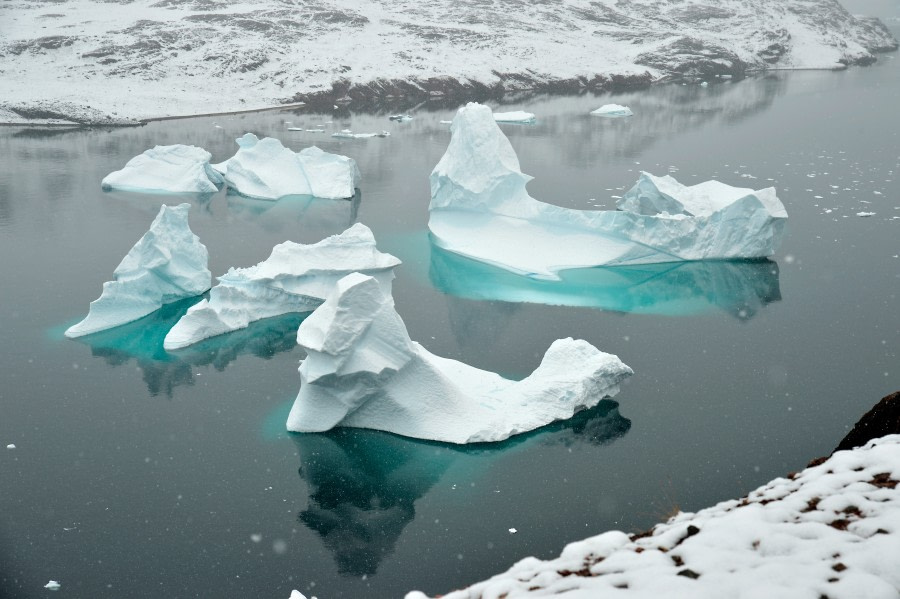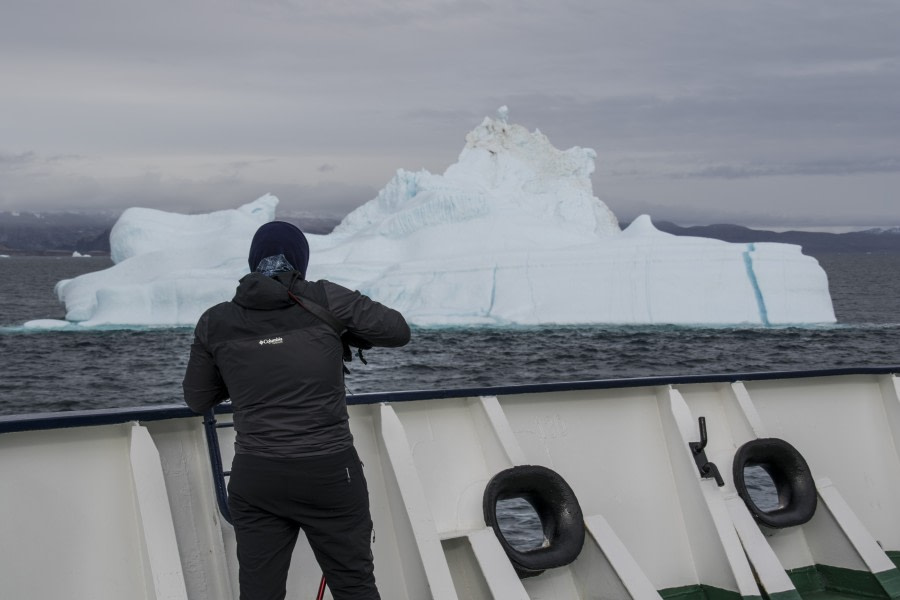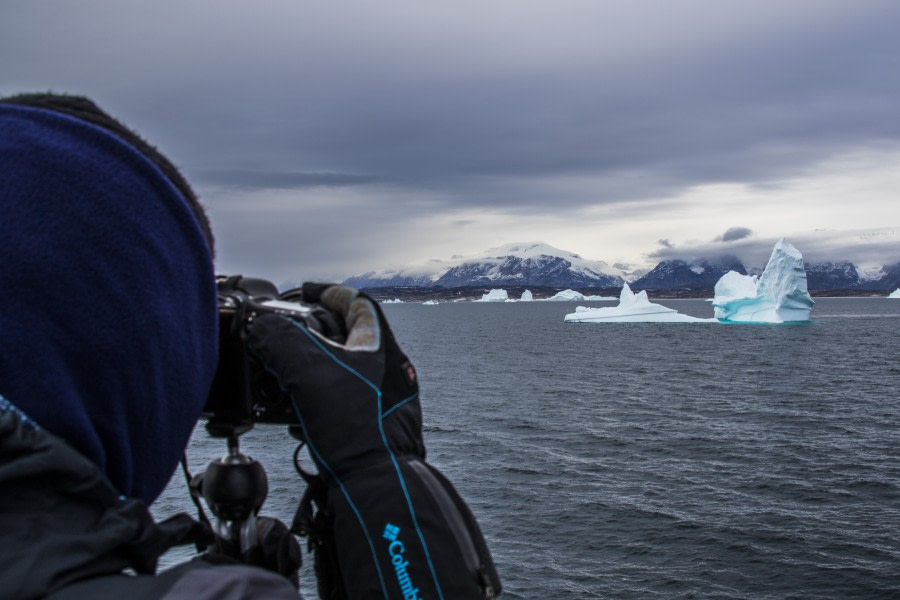 10 Days/9 Nights
10 Days/9 Nights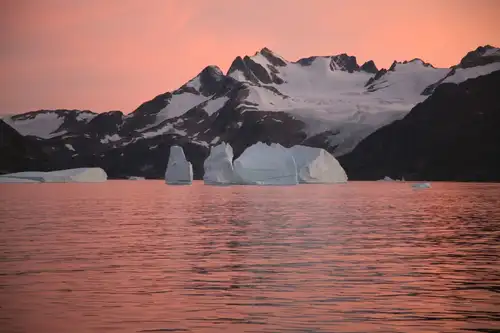
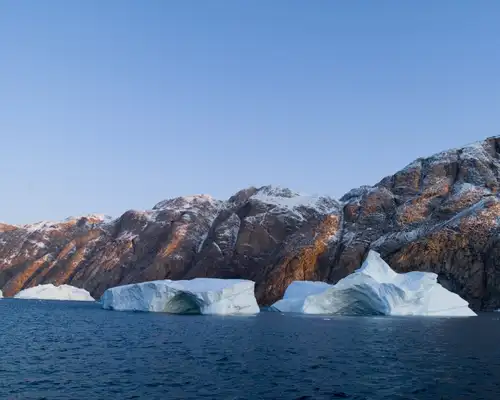

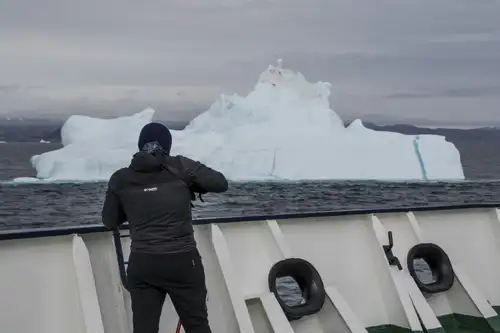
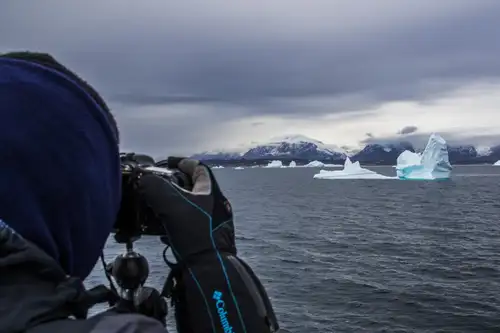
Important Note: All itineraries are for guidance only. Programs may vary depending on ice, weather, and wildlife conditions. Landings are subject to site availabilities, permissions, and environmental concerns per AECO regulations.
Long hikes are for groups of 24 passengers maximum, accompanied by two armed expedition staff and a Zodiac that will sail ahead to watch for polar bears along the shoreline. Passengers who join this activity should have the willingness and ability to walk at least 15 km (9 miles) in semi-rough terrain that includes shorelines, tundra, low hills, and river crossings. Walks will take around six hours from start to finish, rest times included. We will walk at a modest pace and not cross any alpine terrain. Passengers who do not take part in long walks will have a landing in the morning at the start point of the walk, then sail to the end point of the walk for their second landing in the afternoon.
On the Iceland road
Your journey begins in the morning, where by request you can transfer via chartered bus (T) from bus stop Harpa Concert Hall and Conference Centre at Austurbakki, Reykjavik (the meeting point) to the ship in Akureyri (the starting point). You arrive in the afternoon after a six-hour drive through northern Iceland.
PLEASE NOTE: This transfer (T) must be booked and paid for in advance. In the early evening, the ship departs from the port of Akureyri, sailing north toward the Denmark Strait.
Sailing to east Greenland
While sailing north you’re likely to see fulmars, kittiwakes, gannets, and common guillemots. You then cross the Arctic Circle, possibly spotting whales. By evening, the first icebergs flash into sight with your approach to the east Greenland coast, near Brewster.
Arriving at Earth’s largest fjord
Today you reach Scoresbysund, sailing along the glaciated Volquart Boons Kyst. You may also enjoy a Zodiac cruise past one of the glacier fronts, along with a visit to the basalt columns and ice formations of Vikingebugt.
In the afternoon, we plan to sail by the east coast of Milne Land among a multitude of giant icebergs. If we can also land at Charcot Havn, we will make a walk to the Charcot Glacier. We will then continue by Bear Island and sail into Øfjord.
Colors of the cape
The goal is a Zodiac cruise near Black Island, surrounded by icebergs. Their austere blue-white contrasts sharply with the sediment slopes nearby. The afternoon plan is to sail through the northern parts of Red Fjord and into Harefjord, with the chance to see musk oxen and warm autumnal foliage.
Enormous bergs, Arctic hares
In the morning you encounter colossal icebergs, some over 100 meters (328 feet) high and more than a kilometer (.62 mile) long. Most of them are grounded, as the fjord is only about 400 meters deep (1,312 feet). You then land near Sydkap, with fine views of Hall Bredning and a good shot of seeing Arctic hares.
Today’s long walk goes from Sydkap to Nordøstbugt (12 km, 7.5 miles to the northeast), where the river coming from Holger Danskes Briller flows into the sea. We plan to walk south along the shore to Satakajik, seeing whale vertebrae and the remains of Thule summer houses. Passengers who opt out of the long walking group will join us at this location for their second excursion of the day.
Settlement at Scoresbysund
Today you make a tundra landing on Liverpool Land, in Hurry Inlet. The afternoon stop is Ittoqqortoormiit, the largest settlement in Scoresbysund at about five hundred inhabitants. At the post office you can buy stamps for your postcards, or just stroll around to see the sled dogs and drying skins of seals and musk oxen. In the afternoon you sail south, passing the picturesque landscapes of the Blosseville Coast.
Remote shores
Turner Sound and Rømer Fjord grant you the opportunity to sail far inland, as they have no glacier front at the head and are not clogged with ice. In this location, you may get the opportunity to spot narwhals.
Sea life under the northern lights
A sea day grants you the opportunity to spot whales and seabirds – and at night, the magical northern lights.
Journey’s end at Akureyri
Every adventure, no matter how grand, must eventually come to an end. You disembark in Akureyri, where on request you can transfer (T) by chartered bus (a six-hour drive that you must book in advance) to the bus stop Harpa Concert Hall and Conference Centre at Austurbakki, Reykjavík, taking home memories that will accompany you wherever your next adventure lies.
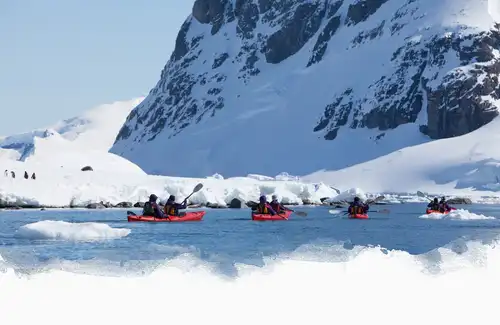
Explore the Arctic and Antarctic Coastline in a Kayak
Even after exploring shores, mountains, and spotting wildlife, there’s a whole world to discover on the water. Polar kayaking offers a unique way to experience the blue-and-white beauty of the polar seas, visiting stunning ice formations and waterways too small for our ships.
Explore the Arctic and Antarctic Coastline in a Kayak
Even after exploring shores, mountains, and spotting wildlife, there’s a whole world to discover on the water. Polar kayaking offers a unique way to experience the blue-and-white beauty of the polar seas, visiting stunning ice formations and waterways too small for our ships.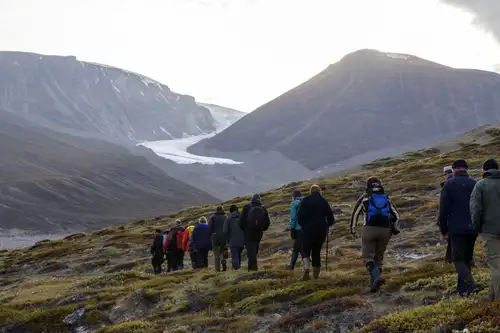
Leave the Vessel Behind on Our Long Hikes Activity
Immerse yourself in the vibrant surroundings of Greenland and Svalbard with our long hikes activity. Enjoy the Arctic summer far from the vessel as you embark on a full-day hike, crossing tundra, rivers, and rugged backcountry.























































































- Flights to the embarkation point and from the disembarkation point.
- Pre- and post- land arrangements.
- Passport and visa expenses.
- Meals ashore.
- Personal health Insurance for Medical, Accident and Repatriation/Evacuating.
- All personal expenses, including but not limited to laundry services, bar beverages, and excess internet usage charges.
- The customary gratuity at the end of the voyages for stewards and other service personnel aboard (guidelines will be provided).
- Voyage aboard the indicated vessel
- All meals throughout the voyage aboard the ship including snacks, coffee and tea.
- All shore excursions and activities throughout the voyage by Zodiac.
- Program of lectures by noted naturalists and leadership by experienced expedition staff.
- Free use of rubber boots and snowshoes.
- Transfers and baggage handling between the airport, hotels and ship only for those passengers on the group flights to and from Longyearbyen.
- All miscellaneous service taxes and port charges throughout the programme.
- AECO fees and governmental taxes.
- Comprehensive pre-departure material.
- Yes, binoculars are often needed to see wildlife, whales and for example birds in the wild.
- We offer a 40% child discount in certain cabin types on a selection of voyages for children between three and 15 years old.
- The currency used on all vessels is the Euro, but you can also pay with USD.
- No, you are not able to get cash advances on the vessel.
- The surface of Greenland is dramatic and spectacular. Heavily indented with numerous fjords, the coast is formed by spectacular high mountains, 2000 meters (6500 feet) high cliffs and innumerable glaciers. The large glaciers produce the huge cathedral-like icebergs that are abundant in the Greenlandic waters. Greenland and its surrounding waters are home to an impressive array of wildlife.
- Greenland is part of the Kingdom of Denmark. However, the local population has been enabled to develop and run their own political system. The monarch of Denmark does have executive power, but she mostly serves in a ceremonial and representative capacity. Greenland offered a home to Paleo-Eskimo tribes as far back as 2500 B.C.E., but it became settled by Norwegians and Icelanders by 986 C.E. In the 14th Century Norway became a part of Denmark. The Treaty of Kiel gave Denmark final control of Greenland in 1814, but Norway claimed the eastern section of the country. This claim was successfully disputed in 1933, and Denmark has had control of Greenland ever since. The country was granted home rule by Denmark in 1979. Interestingly, the U.S. has shown a high level of interest in Greenland, including once offering to buy the nation for $100 million USD.
- The Hondius was built in Croatia in 2018 and delivered in 2019.
- The number of passengers is limited to 174 on the Hondius. Furthermore the vessel is manned by 24 highly experienced international nautical crew, 32-34 international hotel crew, 13 expedition staff (1 expedition leader, 2 assistant expedition leaders and 10 guides/lecturers) and 1 doctor.
You May Also Like


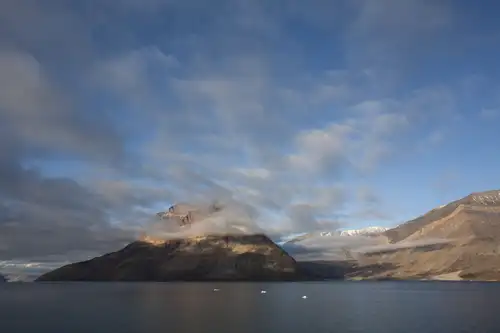
East and South Greenland Explorer, Incl. flight from Narsarsuaq to Copenhagen
 21 Days / 20 Nights
21 Days / 20 Nights

Ultimate East and South Greenland Discovery
 30 Days / 29 Nights
30 Days / 29 Nights

Spitsbergen - Northeast Greenland - Aurora Borealis, Including Long Hikes
 14 Days / 13 Nights
14 Days / 13 Nights
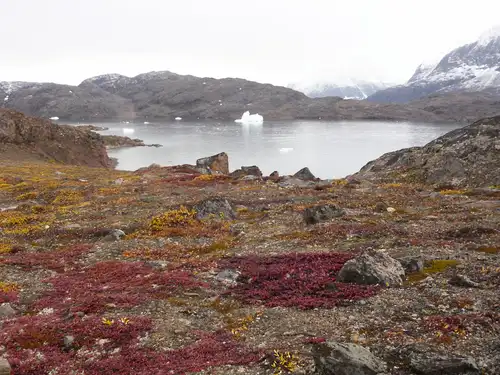
East Greenland, Scoresby Sund - Aurora Borealis, Including Long Hikes
 10 Days / 9 Nights
10 Days / 9 Nights
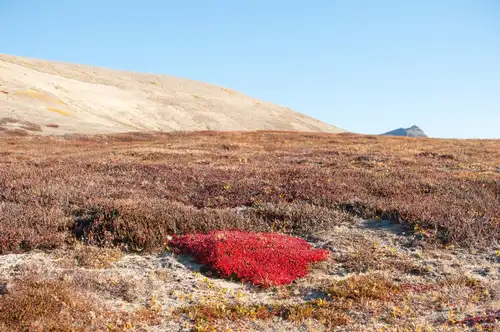
South Greenland Explorer, Aurora Borealis, Incl. flight from Copenhagen to Narsarsuaq
 10 Days / 9 Nights
10 Days / 9 Nights
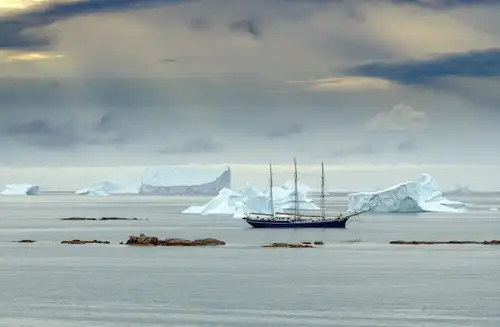
East Greenland - Scoresby Sund - Iceland, Aurora Borealis, Fly & Sail
 12 Days / 11 Nights
12 Days / 11 Nights

Northeast Greenland Solar Eclipse Explorer Voyage
 14 Days / 13 Nights
14 Days / 13 Nights

Spitsbergen - Northeast Greenland, Fly & Sail
 20 Days / 19 Nights
20 Days / 19 Nights
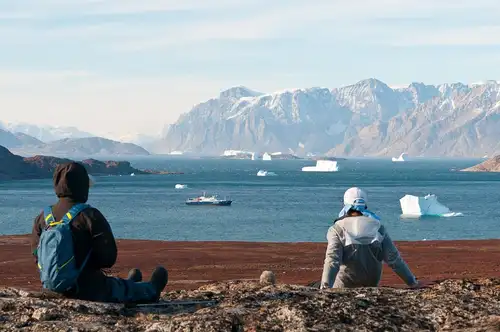
Northeast Greenland Extreme
 14 Days / 13 Nights
14 Days / 13 Nights

East Greenland, Scoresby Sund, Including Long Hikes
 10 Days / 9 Nights
10 Days / 9 Nights

East & South Greenland Explorer – Aurora Borealis
 15 Days / 14 Nights
15 Days / 14 Nights

East Greenland, Scoresby Sund - Aurora Borealis, Fly & Sail
 11 Days / 10 Nights
11 Days / 10 Nights

East Greenland, Scoresby Sund - Iceland , Aurora Borealis, Fly & Sail
 12 Days / 11 Nights
12 Days / 11 Nights

Arctic Foxes: Constant Gardeners of the Arctic
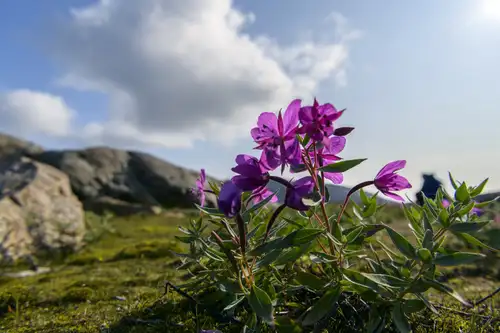
Arctic Flowers, Trees, and Other Plant Life
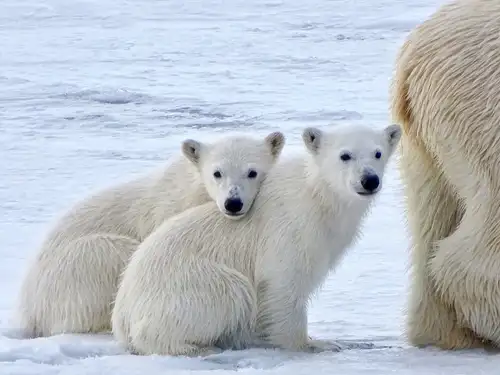
Where the Polar Bears Roam
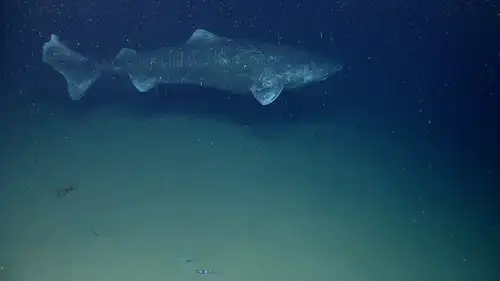
9 Facts about the Greenland Shark

The World Is Changing for Greenland's Native Inuit People
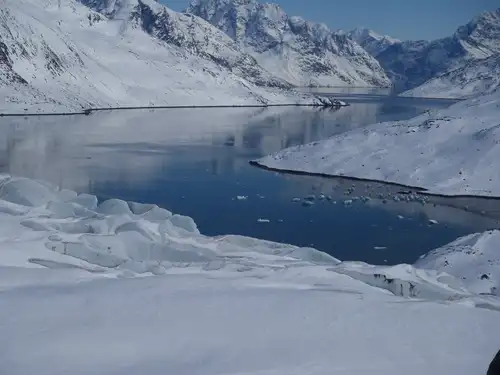
8 Scientific Wonders of the Arctic
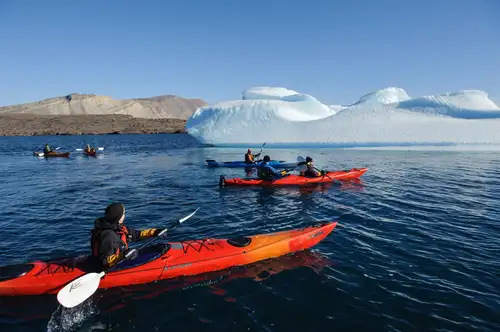
Greenland: Where the Kayak Was Invented
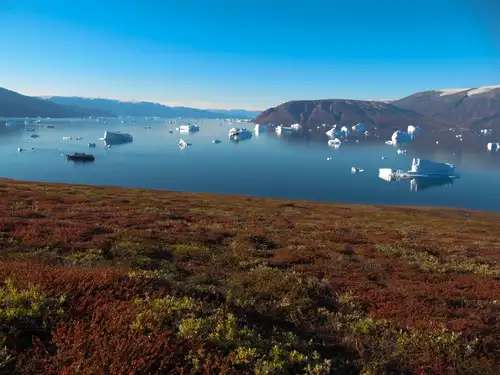
Northeast Greenland National Park
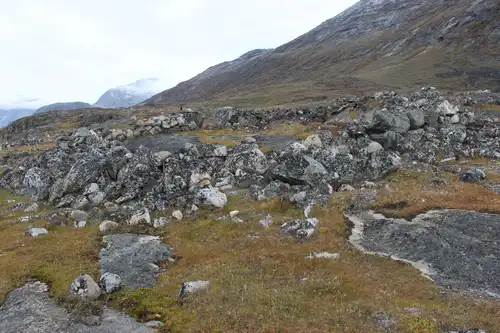
The Norse Settlement of Greenland
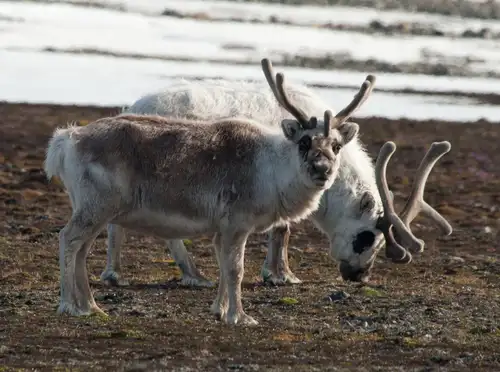
Amphibian, reptiles and herbivore mammals in the Arctic
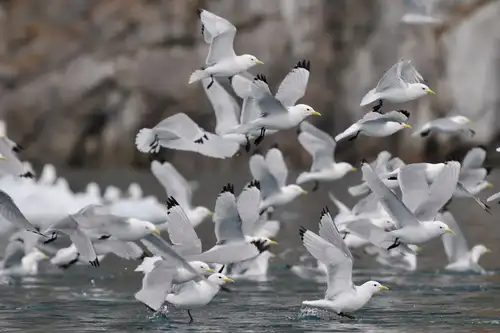
Five Birds You Might See on Your Greenland Cruise
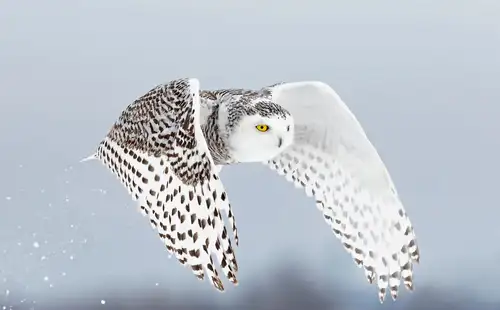
Secrets of the Snowy Owl: Habitat, Adaptations, and Other Facts
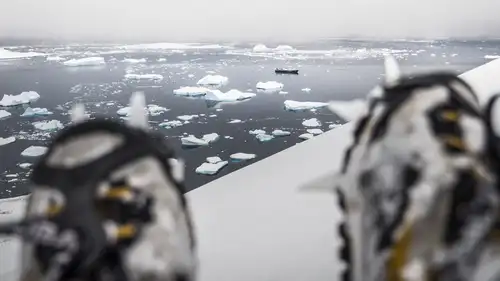
Arctic and Antarctic Basecamp Cruises – Choose Your Own Adventure
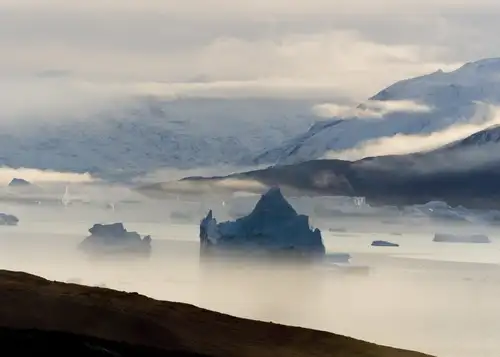
Peaks, Fjords, and Auroras: 14 East Greenland Attractions

The Arctic Hare: Easter Bunny
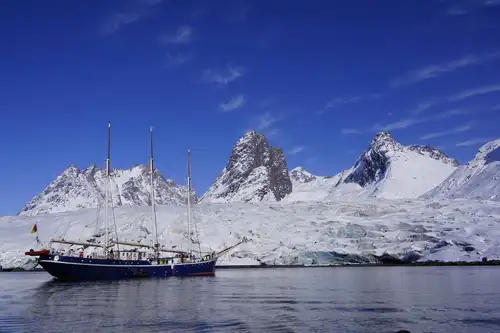
5 Misconceptions You Might Have About Greenland
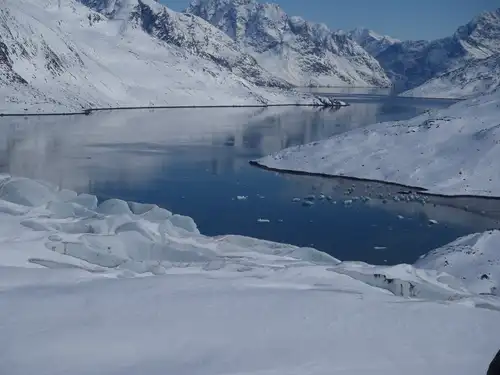
How and When Did Greenland Become Covered in Ice?
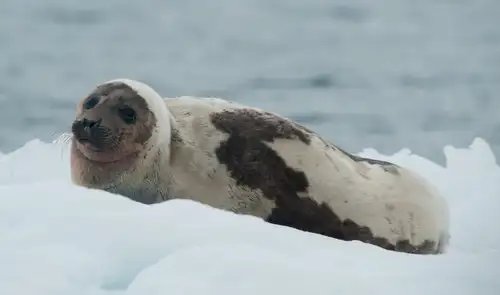
Harp seals harping on in Greenland
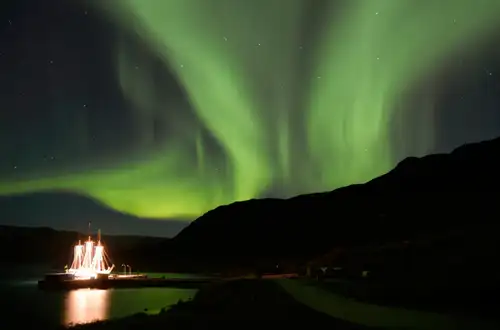
The Northern Lights dancing across the skies





